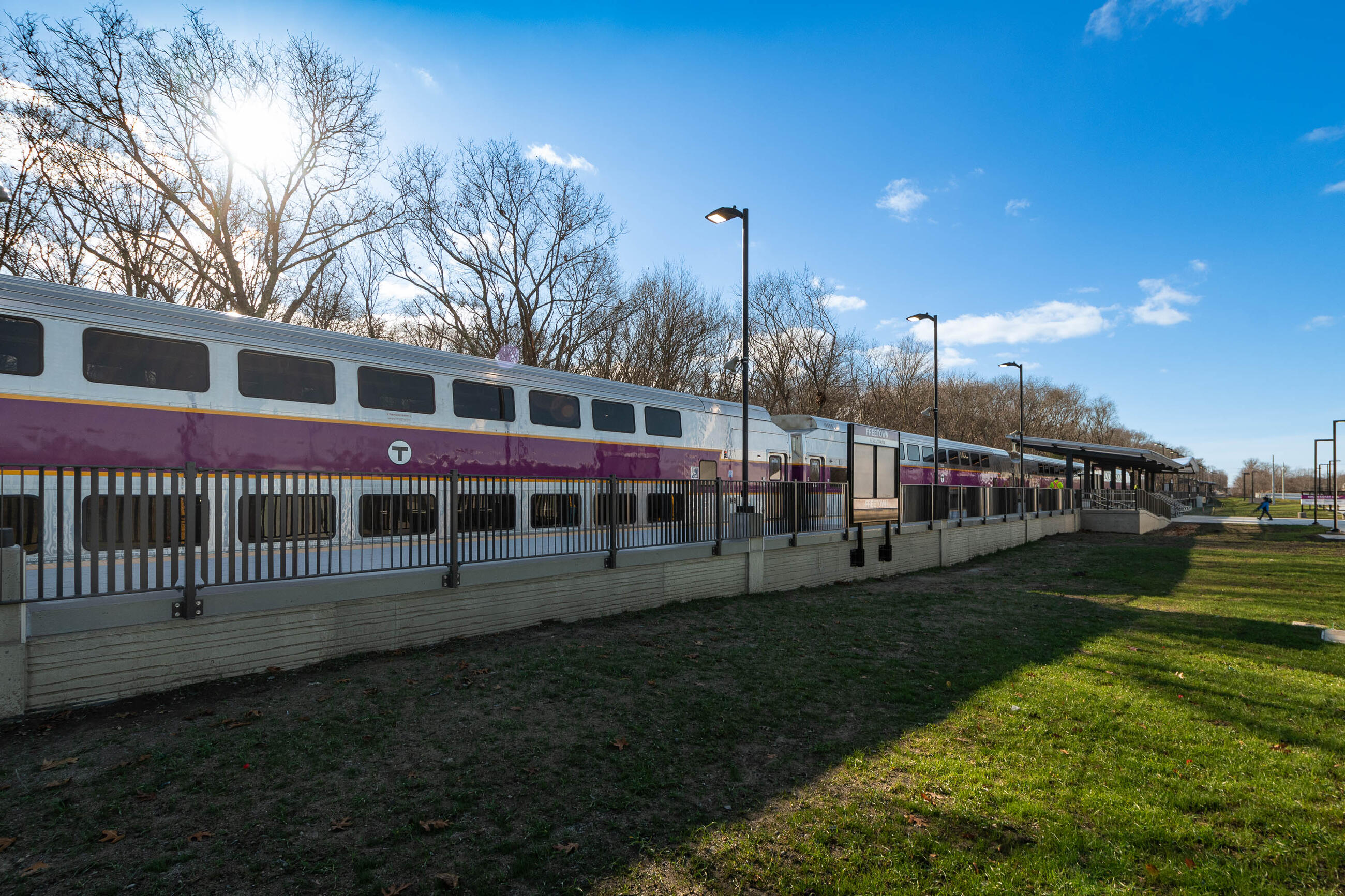Commuter Rail Safety

Safety Tips for Commuter Rail
Stay off the tracks. It is never safe to be near or on railroad tracks. You can lose your life or be seriously injured. Trains take a long time to slow down or come to a stop. If you’re close to or on the tracks, trains might not be able to stop in time to avoid hitting you. You may also be subject to fines or arrest for trespassing on the tracks.
Stand back from the edge of station platforms. Observe the pavement markings. Stand back from the platform, behind the painted or raised markings. Wait until the train stops to approach the door and let others exit before you board.
Stay clear of the railroad right-of-way (ROW). The ROW is where trains and rail equipment operate, and the space ten feet from the track in any direction. It is dangerous to be on or near it because you might not hear or see the train coming. Trains are quieter and faster than you think.
Cross tracks only at designated locations. The only safe place to cross tracks is at designated public crossings with a sign, flashing red lights or a gate. Always look for a train before crossing and wait until you can see clearly in both directions. Multiple tracks may mean multiple trains.
Obey all warning signs and signals. Never pass flashing lights or go around lowered gates. Wait until lights have stopped flashing and gates are completely raised.
Why Safety Education is Important
In the United States, a person or vehicle is hit by a train every three hours. Safety education is crucial to reducing the number of serious injuries and deaths caused each year by trains.
Our trains travel fast:
- The average freight train travels 55 miles per hour. Trains at this speed can take a mile or more to come to a full stop.
- Our Commuter Rail trains can reach up to 80 miles per hour.
Keeping the ROW and tracks clear will make trips safe and reliable for all riders. We aim to educate riders and community members to prevent accidents or close calls.
We partner with Operation Lifesaver, a non-profit public safety education and awareness organization dedicated to rail safety. By sharing Operation Lifesaver materials and resources, we hope to achieve our shared goal of reducing collisions, fatalities and injuries at rail crossings.
Resources
You can watch and share more videos from our Commuter Rail Safety Program video series, including videos for the following age groups:
More free resources from Operation Lifesaver:
- View safety tips for riders
- View safety tips for pedestrians and cyclists
- View safety tips for drivers
Contact Us
To report a problem with a railroad crossing, call 1-800-522-8236.
To report an emergency, dial 911 or contact our Transit Police at 617-222-1212.
For safety questions or more information, contact our Customer Support Center at 617-222-3200 or our online form.
Operation Lifesaver
Operation Lifesaver is a national nonprofit dedicated to educating the public on the dangers of trespassing on railway properties, and reducing the number of collisions, fatalities, and injuries on or near railroad tracks.
Operation Lifesaver
Operation Lifesaver is a national nonprofit dedicated to educating the public on the dangers of trespassing on railway properties, and reducing the number of collisions, fatalities, and injuries on or near railroad tracks.